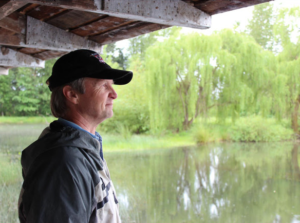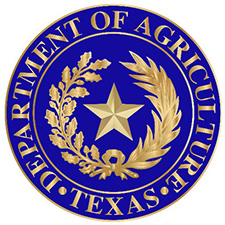USDA Offers Conservation Assistance to Landowners to Protect Wetlands, Agricultural Lands and Grasslands
 NRCS plans to invest $450 million this year in conservation easements through the Agricultural Conservation Easement Program (ACEP). This program helps private landowners, tribes, land trusts and other groups wanting to restore and protect critical wetlands and protect agricultural lands and grasslands. NRCS accepts ACEP applications year-round, but applications are ranked and funded by enrollment period, which have application deadlines set by the states. Many states have upcoming deadlines this spring.
NRCS plans to invest $450 million this year in conservation easements through the Agricultural Conservation Easement Program (ACEP). This program helps private landowners, tribes, land trusts and other groups wanting to restore and protect critical wetlands and protect agricultural lands and grasslands. NRCS accepts ACEP applications year-round, but applications are ranked and funded by enrollment period, which have application deadlines set by the states. Many states have upcoming deadlines this spring.
Contact:
Media Contact
FPAC.BC.Press@usda.gov
WASHINGTON, March 27, 2019 –USDA’s Natural Resources Conservation Service (NRCS) plans to invest $450 million this year through the Agricultural Conservation Easement Program (ACEP) to help private landowners, tribes, land trusts and other groups wanting to restore and protect critical wetlands and protect agricultural lands and grasslands.
“For over 25 years, NRCS has worked with landowners to protect their wetlands and agricultural lands,” NRCS Chief Matthew Lohr said. “Conservation easements are important tools for people who are trying to improve soil health, water and air quality and wildlife habitat on their land.”
ACEP provides assistance to landowners and eligible entities helping conserve, restore and protect wetlands and productive agricultural lands and grasslands. NRCS accepts ACEP applications year-round, but applications are ranked and funded by enrollment period, which have application deadlines set by the states. Many states have upcoming deadlines this spring.
Wetland Reserve Easements
Through ACEP Wetland Reserve Easements, NRCS helps landowners and tribes restore, enhance and protect wetland ecosystems. NRCS and the landowner work together to develop a plan for the restoration and maintenance of the easement.
“Seventy-five percent of the nation’s wetlands are situated on private and tribal lands,” Lohr said. “Wetlands provide many benefits, including critical habitat for a wide array of wildlife species. They also store floodwaters, clean and recharge groundwater, sequester carbon, trap sediment and filter pollutants for clean water.”
Wetland conservation easements are either permanent, for 30 years or the maximum extent allowed by state law. Tribal landowners have the added option of enrolling in 30-year non-easement restoration contracts. Eligible lands include:
- Farmed or converted wetlands that can successfully be restored;
- Croplands or grasslands subject to flooding; and
- Riparian areas that link protected wetland areas.
Agricultural Land Easements
Through ACEP Agricultural Land Easements (ALE), NRCS provides funds to eligible entities to purchase easements on private working lands. This program helps keep working lands working, especially in areas experiencing development pressure.
Eligible cooperating entities include state or local agencies, non-profits and tribes. Landowners continue to own their property but voluntarily enter into a legal agreement with a cooperating entity to purchase an easement. The cooperating entity applies for matching funds from NRCS for the purchase of an easement from the landowner, permanently protecting its agricultural use and conservation values. Landowners do not apply directly to NRCS for funding under ALE.
Easements are permanent. Eligible lands include privately owned cropland, rangeland, grassland, pastureland and forestlands.
More Information
ACEP remains a major part of the recently passed 2018 Farm Bill and program implementation will continue during fiscal year 2019 with some minor changes.
Landowners and tribes interested in wetland reserve easements and partners interested in agricultural land easements should contact their local USDA service center.











